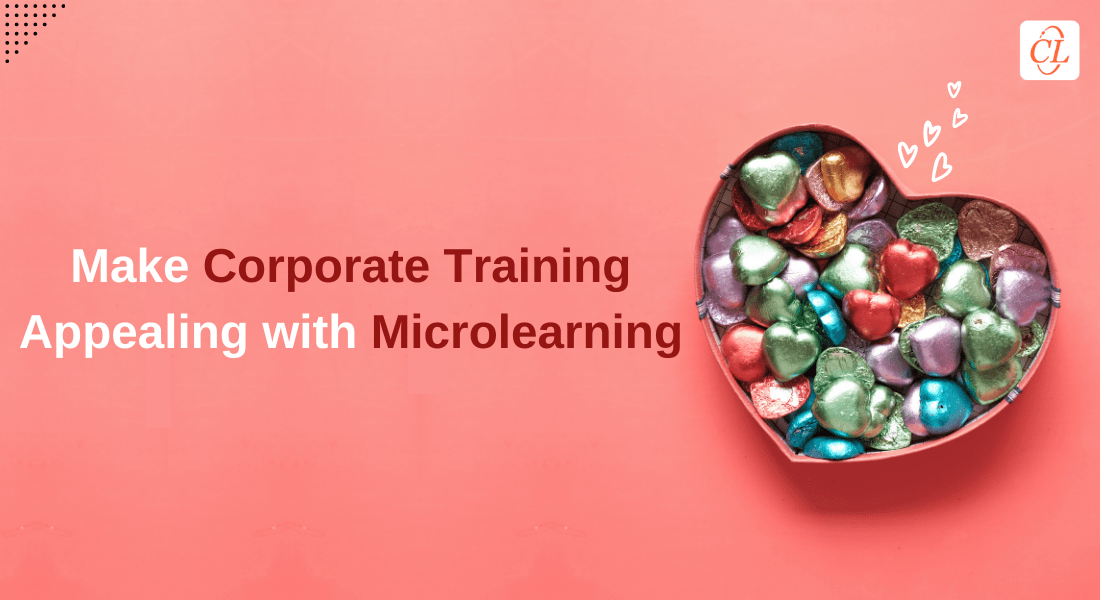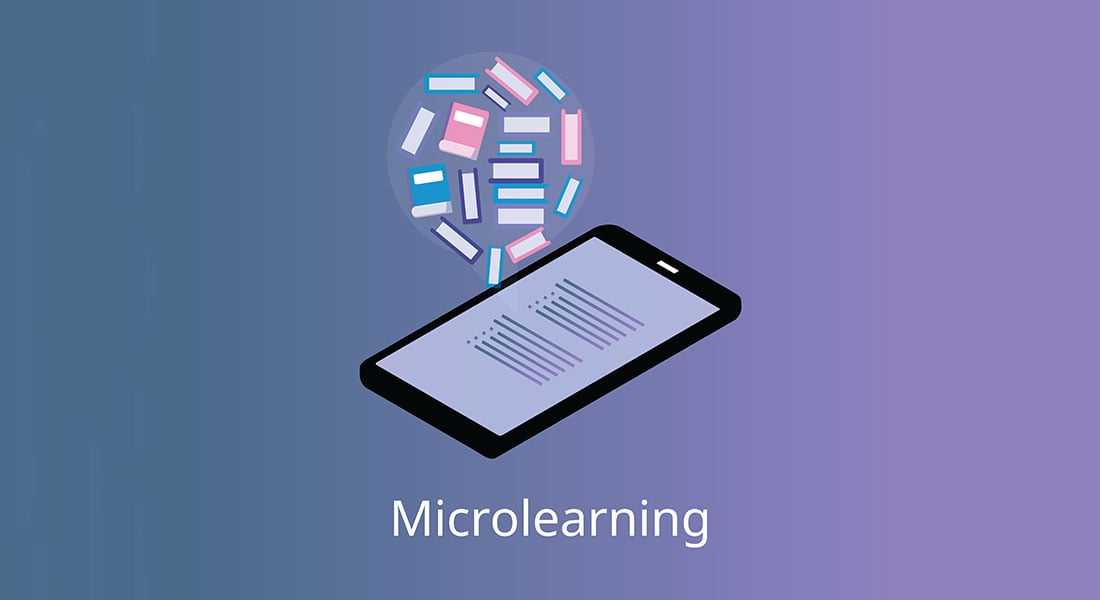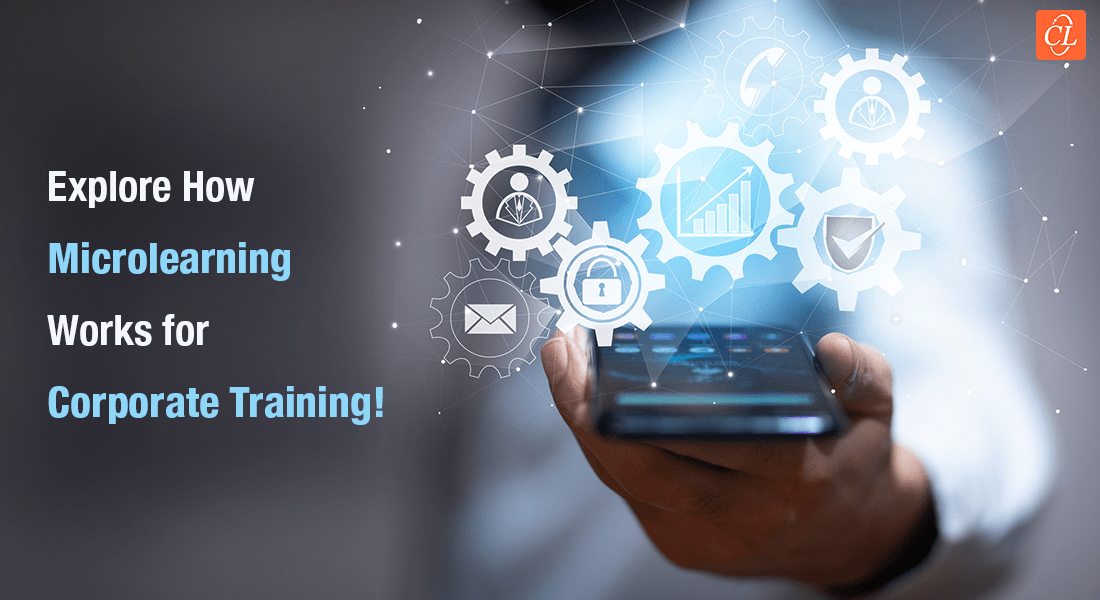Top 5 Microlearning Benefits and Best Practices to Scale Your Corporate Training
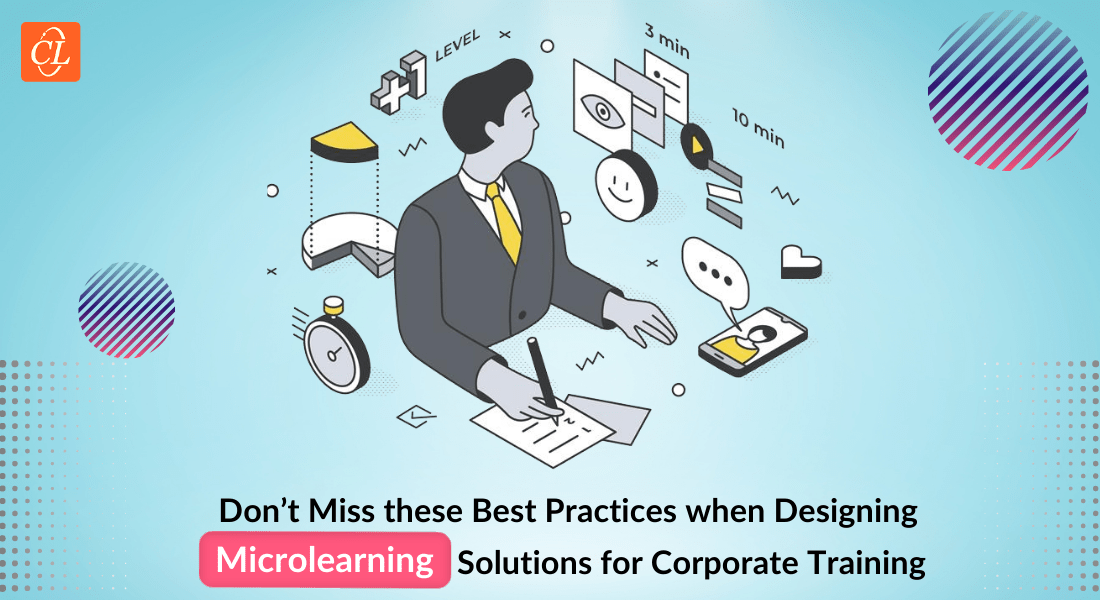
“A journey of thousand miles begins with a single step.” Drawing motivation from this famous proverb, microlearning can be a significant single step in the journey of learning. Its essence lies in the fact that it caters to a single learning objective. Being a combination of two words — micro and learning, where micro refers to small and learning stands for acquiring new knowledge, microlearning as a collective term signifies small and short-term learning units.
Often, when a person starts working, learning takes a back seat because of multiple factors like time crunch, extra work, other personal or professional responsibilities, etc. Even the idea of putting in long hours to learn something new or acquire a new skill can be a major turndown for most employees. To tackle this problem effectively and in a way that the quality of learning isn’t compromised and learners don’t have to put important things on hold, microlearning is a savior.
Microlearning at Its Best!
Here are some undisputable benefits that provide microlearning an edge over the traditional form of training.
- Makes information easy to consume
- Keeps the learner engaged
- Promotes better retention and recall
- Facilitates Self-paced learning
- Offers wiggle room for personalized content for the learner
Read on to unveil the best practices for designing amazing microlearning assets!
It accommodates the learning requirements and professional restraints to facilitate conducive learning opportunities. With the stage being set, delve deep into the idea of microlearning.
What is Microlearning?
Microlearning is a training strategy that uses short, engaging, and interactive content. It basically consists of small chunks of information spread throughout your courses that eventually fit into the same topic. As each course is of smaller duration, lesser time is required to complete them. Each microlearning course is complete in itself and serves the purpose of fulfilling a single learning objective. It doesn’t require any special preparation to undertake the microlearning course; rather, it can be pursued out of interest or an assigned task. It’s the type of learning that helps your employees to retain information the most.
In a nutshell, microlearning is learning in small doses and at the required time. The idea is to get the learner familiar with the desired content in a few bites instead of a full course. With that said, microlearning can be much more interactive and fun than traditional classroom training because it’s organized around shorter sessions that require less commitment from employees and enable a more convenient and flexible approach.
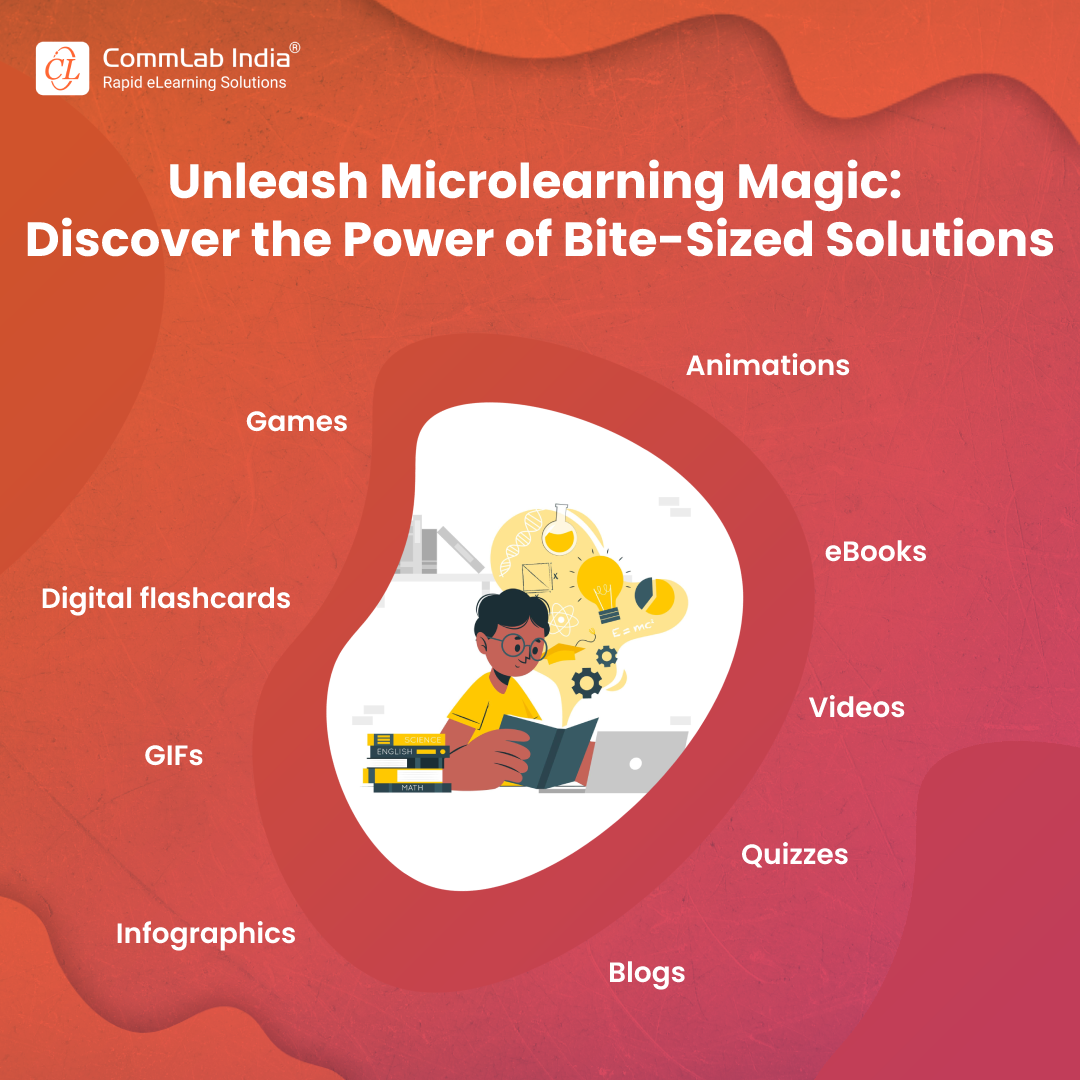
Some of the popular and equally effective microlearning formats include videos, audio, animations, quizzes, infographics, eBooks, and games. These formats form an important part of modern learners’ lifestyles and the way they consume information which makes microlearning a viable option for catering to the present as well as the future workforce learning requirements.
Looking for rapid development techniques for microlearning? Click here!
When to Use Microlearning?
Bulky information tends to put off employees. Why? Because is often perceived as an additional task rather than an opportunity for growth and progress. With their minds wandering about the fun they are missing while attending the training session, expecting them to focus is a far-fetched dream. Distraction is another hurdle when we talk about lengthy courses. To fulfill the learning objectives, it is often suggested to keep the learner segment in mind. And taking into consideration the generation that might forget a book but not their mobile, microlearning can be really effective in introducing new content. The new information can be provided in bite-sized nuggets instead of overwhelming the learners with large amounts of information all at once. In fact, microlearning can be leveraged for the onboarding process and even reinforcing existing knowledge.
Microlearning can support your training efforts to help your employees develop essential skills and improve their performance and productivity by providing immediate feedback on their work. To ensure the best and most effective results, you should select the right training format to design and develop your online course because if it’s too difficult (or just not engaging or redundant), the learners won’t stick with it; if it’s too easy, then there’s no incentive for them to keep coming back.
Benefits of Using Microlearning
With innumerable benefits in its basket, microlearning is indeed a godsent for learners facing time constraints. In this section, I’ll walk you through some of the top benefits of microlearning that will encourage you to integrate this impactful technique into your corporate training.
- Makes information easy to consume: The information is provided in small, digestible chunks which makes it easy for the learners and employees to grasp the concepts in a better way. The relevant and focused content helps them connect the dots for a holistic understanding.
- Keeps the learner engaged: Replete with interactivities, microlearning makes the learning process fun. It keeps the learner invested in the course via quizzes, animations, infographics, case scenarios, etc.
- Promotes better retention and recall: In microlearning, the information is presented in the form of micro lessons which trickle down into the long-term memory, enabling better recall and retention. Moreover, it is feasible for the learners to apply those skills and information it in day-to-day activities, thereby making the information more permanent in the memory. Even better, the missing information can be reinforced by repeating that particular training lesson and staying up-to-date.
- Facilitates self-paced learning: As microlearning is self-directed, the learners can take up the course at their convenience and proceed with it at a pace that fosters immersive learning. It benefits them in terms of both time and effort. The time invested in completing the lessons yields long-lasting results as the information gained stays with the learner for a longer duration, thereby saving extra effort and enabling higher productivity.
- Offers wiggle room for personalized content for the learner: In contrast to traditional training methods, catering to the individual learning needs of the employees is way easier in microlearning. The employee can select courses relevant to their respective field. This helps them cultivate skills that help in accelerating promotion and a successful career.
Best Microlearning Practices
Microlearning is a great way to deliver concise and interactive content. Mentioned below are a few best microlearning practices to incorporate into your instructional design for effective results.
- It should be short and concise— usually ranging between 5-15 minutes.
- Before designing the course content, the learning objective must be stated clearly.
- The microlearning content should include an active element, usually known as interactivities, that facilitates interaction between the content and the learner. It includes assets, such as quizzes, interactive PDFs, games digital flashcards, etc., which motivate the learners to engage, participate, and learn something new.
- For an immersive experience, microlearning should be focused on the learner’s needs. The content must be aligned with both the company’s and the learner’s goals and aspirations.
- The microlearning courses must be developed in a mobile-compatible format for better accessibility, flexibility, and convenience.
Microlearning is not limited to delivering small chunks of information rather it’s about creating interactive learning experiences that help the learners to bridge the gap between their aim and required skills and knowledge and motivate them to succeed in their careers.
Parting Thoughts
Microlearning refers to short, concise, and highly targeted lessons designed to enhance and augment the learning process. It has gained prominence in the corporate world for training purposes along with other perks like marketing messages through different media platforms like video, audio, and text. It’s being readily opted by the learning and development departments for building their employees’ skills and knowledge. Got an appetite for more? Check out this webinar recording to understand the ins and outs of microlearning.
Editor’s note: This post was originally published in December 2022 and has been updated for comprehensiveness.



